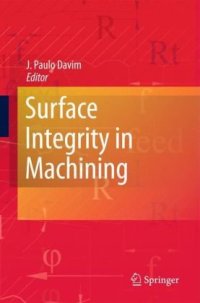
Ebook: Surface Integrity in Machining
- Genre: Technique // Mechanical Engineering
- Tags: Manufacturing Machines Tools, Machinery and Machine Elements
- Year: 2010
- Publisher: Springer-Verlag London
- Edition: 1
- Language: English
- pdf
In machining, a surface can be defined as a border between a machined component and its environment. The term ‘surface integrity’ is used to describe the attributes of a machined surface and its relationship to functional performance. Surface Integrity in Machining describes the fundamentals and recent advances in the study of surface integrity in machining processes.
In general, surface integrity can be divided into two aspects: the external topography of surfaces (surface finish); and the microstructure, mechanical properties and residual stresses of internal subsurface layers. Performance characteristics that are usually sensitive to surface integrity include; fatigue strength, fracture strength, corrosion rate, and tribological behavior (such as friction, wear and lubrication, and dimensional accuracy).
Surface Integrity in Machining gathers together research from international experts in the field. Topics covered include: the definition of surface integrity and its importance in functional performance; surface topography characterization and evaluation; microstructure modification and the mechanical properties of subsurface layers; residual stresses; surface integrity characterization methods; and surface integrity aspects in machining processes.
A useful reference for researchers in tribology and materials, mechanical and materials engineers, and machining professionals, Surface Integrity in Machining can be also used as a textbook by advanced undergraduate and postgraduate students.
"Surface Integrity in Machining" describes the fundamentals and recent advances in the study of surface integrity in machining processes. "Surface Integrity in Machining" gathers together research from international experts in the field. Topics covered include: the definition of surface integrity and its importance in functional performance; surface topography characterization and evaluation; microstructure modification and the mechanical properties of subsurface layers; residual stresses; surface integrity characterization methods; and surface integrity aspects in machining processes. A useful reference for researchers in tribology and materials, mechanical and materials engineers, and machining professionals, "Surface Integrity in Machining" can be also used as a textbook by advanced undergraduate and postgraduate students.